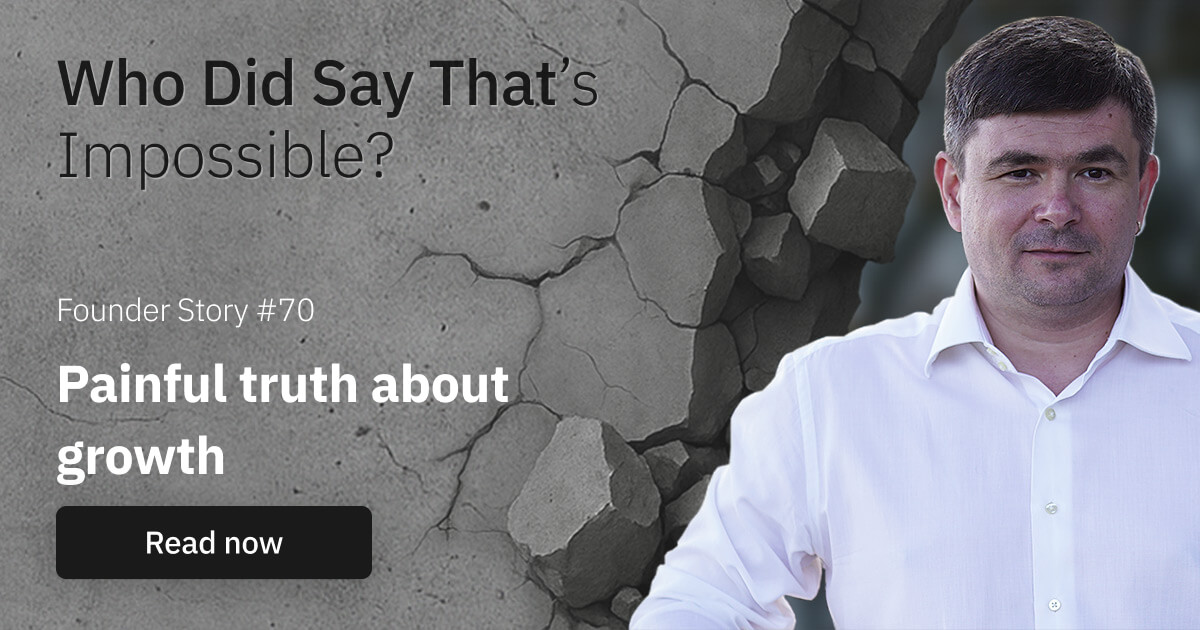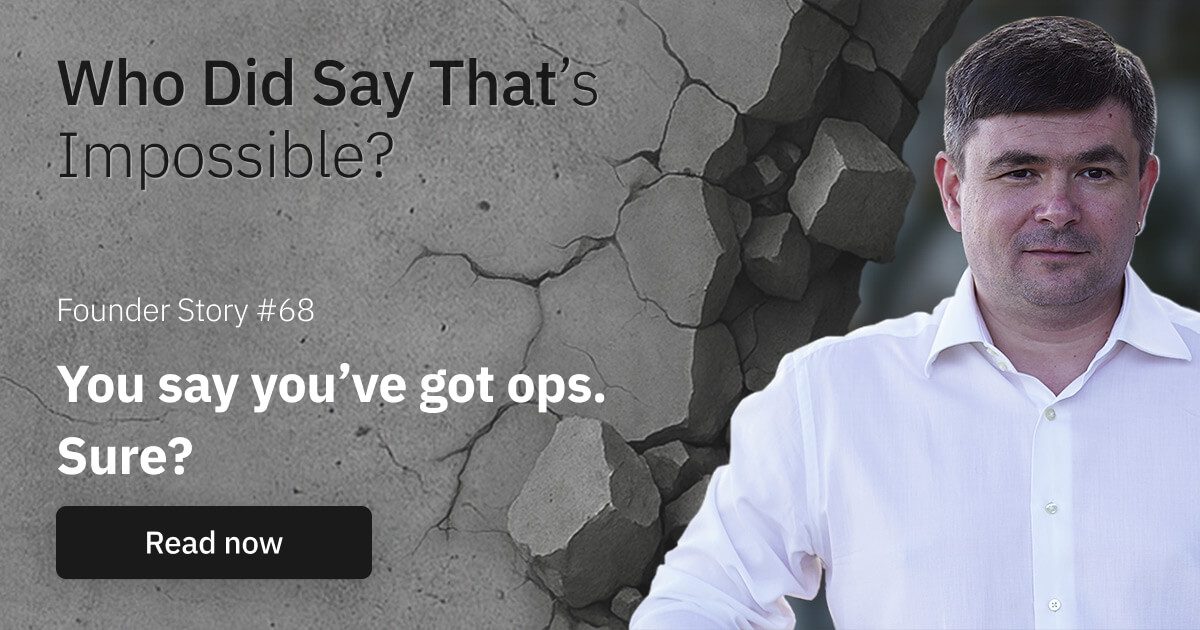Fire the old you. Become the founder you needed.
Or minute of choosing meaning over momentum
We’re all brilliant five years too late.
After the mess. After the “how did I miss that?” review. After the quiet, private admission that the signs were obvious and we were too distracted to act.
The patterns aren’t even unique.
Founders repeat the same mistakes because we chase the same bait: status logos, headcount, the performance of success.
We postpone reflection. We avoid other people’s lessons because “my case is different.”
And then, one morning, the bill arrives.
I started my business for simple reasons.
I wanted to provide for my family and build a place I actually enjoyed showing up to — smart people, meaningful work, no dead-eyed slog.
We spend most of our lives working; at minimum, it should make sense.
(If you ever need proof of how much of life we trade for work, look at time-use research — I’ll include a chart below. It’s sobering.)

I knew my why. Then I forgot it.
How I lost the reason I started
Growth seduced me — and I let it.
Big contracts. New offices. Headcount that looked good on a slide.
We scaled across time zones. We looked “real.” And yes, systems helped: clear roles, documented delivery, predictable outcomes. The chaos quieted. The machine worked.
But here’s the twist no one tells you: you can build an efficient, perfectly systemized company that suffocates the very reason you started.
That was my lesson.
I traded proximity for layers. The names I knew became roles I didn’t.
I could run the business — I just didn’t want to be in it. I had won on paper and lost in purpose.
Structure before size, meaning before metrics
What finally landed for me was embarrassingly simple: removing friction is not the same as finding meaning.
You can make the trains run on time and still be on the wrong track.
The antidote wasn’t another OKR cycle. It was a reckoning:
- What is enough for me — in income, time, creative challenge, relationships?
- What kind of founder do I want to become — operator, architect, or absentee?
- What will I protect even if it costs growth? What will I refuse even if it pays?
Only then do systems matter.
Structure doesn’t exist to feed scale. Structure exists to keep your mission intact while you grow, if you grow at all.
And today?
With AI, no-code, and credible playbooks everywhere, building lean, quiet excellence is not only possible — it’s responsible.
Choosing complexity and headcount theater while ignoring operational clarity is self-betrayal in a trench coat.
If you skip this alignment, the penalty is brutal and compounding:
- You’ll optimize for numbers while your spirit quietly detaches.
- You’ll mistake busyness for contribution and build a calendar that kills strategy.
- You’ll hire people to escape work you never understood, and then blame them when abdication masquerading as delegation collapses.
- And by the time you admit the business you’ve built isn’t one you want, the exit ramp will demand fire — not iteration.
In unstable markets, misalignment isn’t an inconvenience.
It’s a fracture line that only widens under stress.
Be the founder you needed five years ago
If I could hand my earlier self a note, it would be three lines long:
Define enough.
Design for it.
Defend it with structure.
Not because comfort is the goal, but because purpose is.
When your architecture serves your why, the downstream effects are startlingly practical: calmer teams, higher margins, fewer “hero” rescues, more real thinking. You won’t need to double headcount to double clarity.
Become the founder who makes that possible — the one you needed back when momentum was louder than meaning.
- Eugene
Join the “most offbeat” Businessletter on entrepreneurship.

Hi, I’m Eugene.
Over the past 20+ years, I’ve grown an international agency from one-person freelance to a multimillion-dollar business. I’ve led teams, scaled systems, burned out, rebuilt, and learned (the hard way) what it really takes to run a business that doesn’t consume your life.
I help them make sense of complexity, design simple systems, and create the kind of business they actually want to run.
More Stories
Founder Stories

The painful truth about growing a business
Or minute of realizing that “more people” isn’t the answer

Why optimization never ends (and why that’s good)
Or minute of making peace with the unfinished


